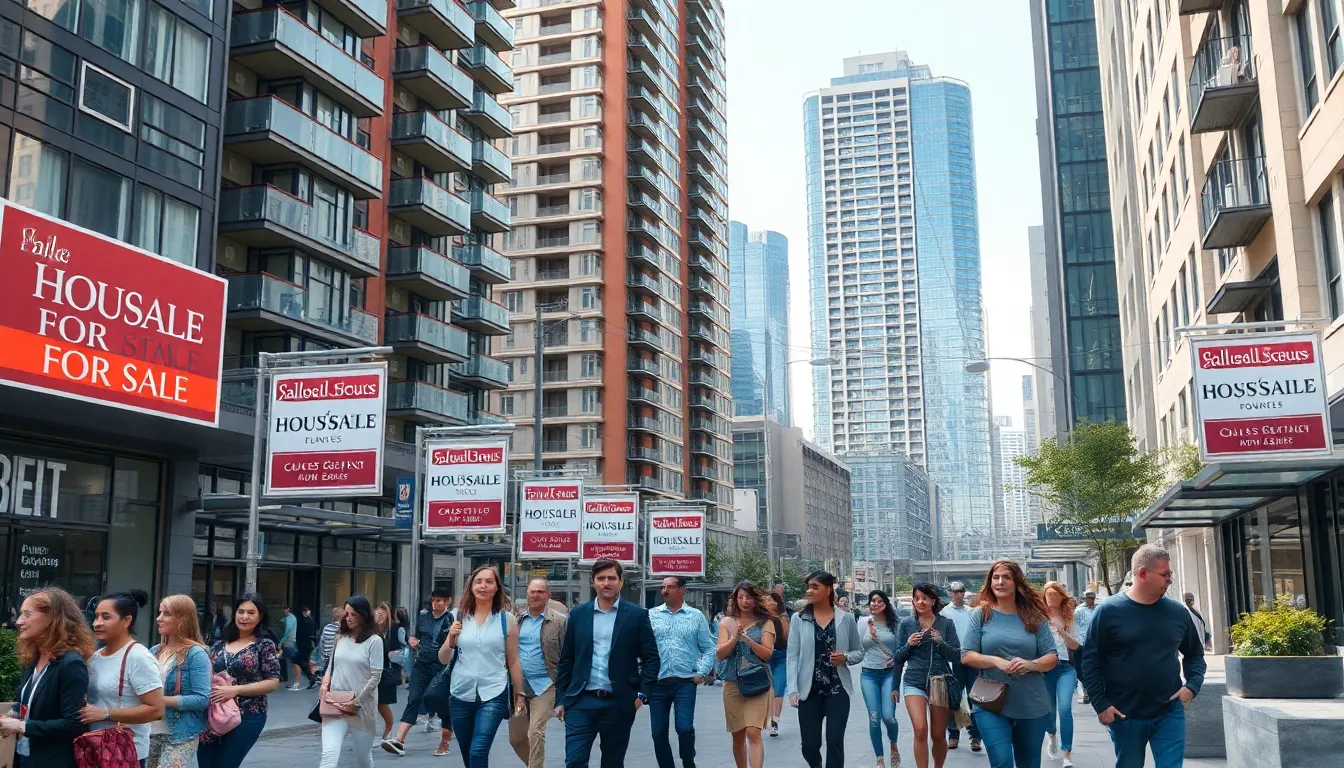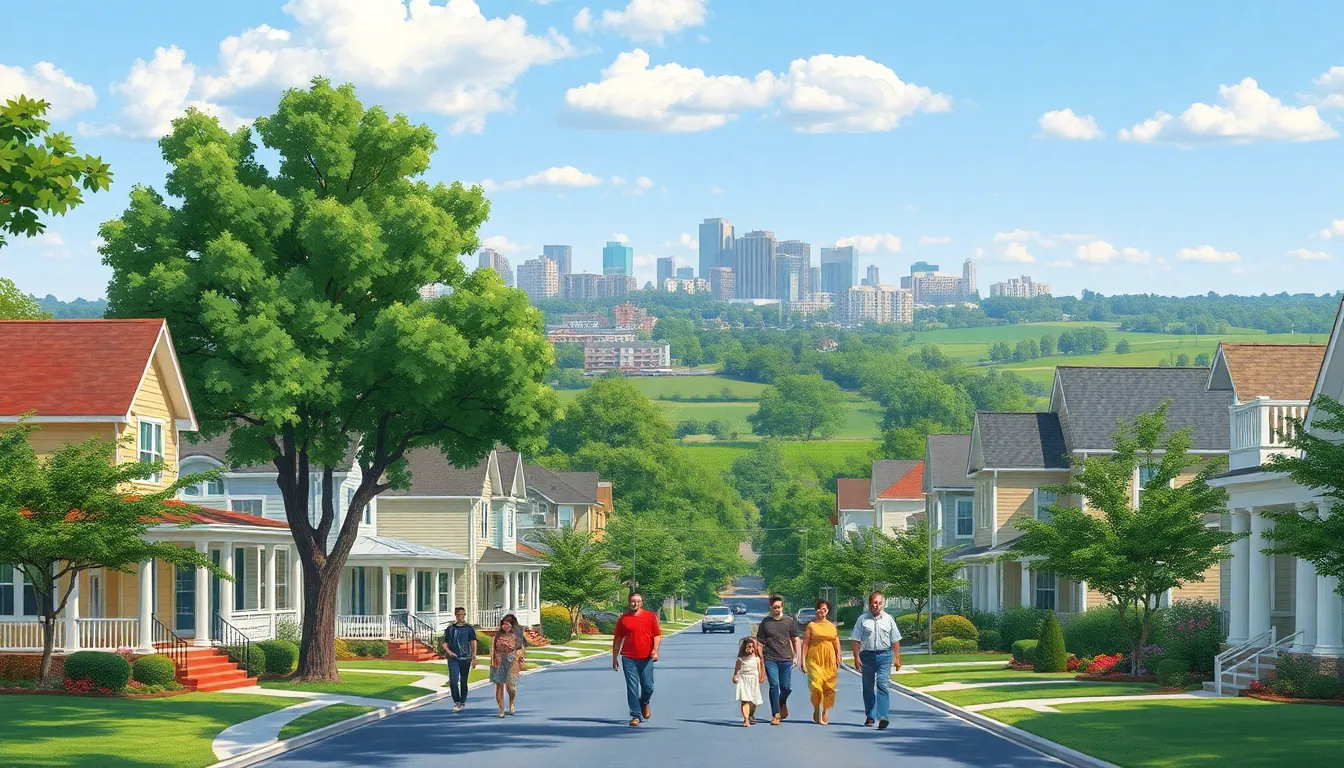Urban living has become a focal point for many, as cities continue to grow and evolve. With rising populations and shifting economic landscapes, understanding city housing trends is more crucial than ever. From skyrocketing rent prices to innovative housing solutions, the dynamics of urban living shape the lives of millions.
As urban centers adapt to the demands of their residents, new insights emerge about housing availability, affordability, and sustainability. Exploring these trends not only reveals the challenges faced by city dwellers but also highlights opportunities for growth and improvement. This article delves into the latest city housing insights, offering a comprehensive look at what’s happening in metropolitan areas and what it means for the future of urban living.
Table of Contents
ToggleOverview of City Housing Insights
City housing insights focus on emerging trends and challenges faced by urban environments. Housing demand continues to rise in cities, driven by population growth and economic shifts. Rent prices have surged, often outpacing wage growth, making affordability a pressing issue for many residents.
Key Trends in Urban Housing
- Rising Rent Prices: Rental rates increased by an average of 3% annually in major metropolitan areas over the last decade.
- Tiny Homes: Interest in tiny homes has grown by 37%, offering affordable living spaces in dense urban settings.
- Co-living Spaces: Co-living arrangements have expanded, providing shared living options that attract young professionals seeking affordability and community.
Challenges and Opportunities
- Housing Shortage: Many cities face a shortage of affordable housing units, with an estimated 7 million new units needed by 2025.
- Sustainable Development: Urban planners are prioritizing sustainable housing solutions, with 40% of new developments incorporating green technologies.
- Regulatory Changes: Zoning laws are evolving. Some cities are relaxing restrictions to allow for more mixed-use developments.
Future Implications
City housing dynamics will impact urban living significantly over the next decade. Housing policy adjustments, innovative solutions, and sustainable practices are vital to addressing the challenges ahead. Keeping abreast of these developments enables stakeholders to make informed decisions about city housing strategies and investments.
Current Market Trends

City housing dynamics reflect significant changes influenced by economic and demographic factors. Understanding these trends helps stakeholders make informed decisions.
Housing Prices
Housing prices in urban areas have experienced substantial increases. In major cities, prices rose by approximately 15% over the last five years. This surge results from high demand amidst limited housing supply, leading to competition among buyers. Developers struggle to keep up with this demand while also addressing the need for affordable options. Additionally, the rise in construction costs, driven by supply chain disruptions, contributes to escalating home prices.
Rental Rates
Rental rates continue to climb in metropolitan areas. The average increase stands at 3% annually, with some cities witnessing even more dramatic spikes. For instance, cities like Austin and San Francisco saw year-over-year rental increases exceeding 5%. This upward trend pressures renters, particularly low-to-middle-income households, making it essential for policymakers to focus on creating more affordable rental units. Co-living arrangements and tiny homes emerged as viable alternatives, helping to alleviate some of these pressures by offering lower-cost living situations.
Urban Development Factors
Urban development relies on several critical factors that shape housing trends in cities. Key elements include infrastructure changes and zoning laws, which significantly influence living conditions and housing availability.
Infrastructure Changes
Infrastructure changes directly affect urban housing dynamics. Enhanced transportation networks, such as new subway lines and improved bus services, increase accessibility to outlying neighborhoods. Improved roadways and bridges facilitate easier commutes, making previously remote areas attractive for residential investment. Additionally, upgrades to utilities and internet connectivity support modern living standards, encouraging urban growth. The presence of parks and public amenities enhances neighborhood appeal, potentially driving housing prices upwards due to increased demand.
Zoning Laws
Zoning laws play a pivotal role in shaping urban housing landscapes. Regulations govern land use, influencing residential density and property types allowed in specific areas. Relaxed zoning laws encourage mixed-use developments, promoting sustainable living environments where work, leisure, and housing coexist. Such adjustments facilitate the construction of affordable housing units, addressing the shortage faced in many urban areas. Furthermore, updated zoning regulations allow for innovative housing solutions like tiny homes and co-living spaces, adapting to changing population dynamics and lifestyle preferences.
Demographics Impacting Housing
Demographics significantly influence urban housing trends. Understanding population dynamics and migration patterns sheds light on current housing challenges and opportunities.
Population Growth
Population growth drives housing demand in urban areas. Major cities experience an influx of residents due to job opportunities and amenities, leading to increased pressure on housing markets. For instance, cities like Austin and Seattle recorded population increases exceeding 20% from 2010 to 2020, contributing to rising rent prices and housing shortages. The surge in population creates a need for more affordable housing projects, as over 50% of residents face cost burdens, spending more than 30% of their income on housing.
Migration Patterns
Migration patterns play a crucial role in shaping housing markets. Urban centers attract young professionals seeking employment, while others move to suburbs for larger living spaces and lower costs. Data from the U.S. Census Bureau indicates that between 2015 and 2020, approximately 1.4 million people migrated from urban to suburban areas. This trend impacts housing demand, as it creates competition in suburban markets and influences new development projects targeting remote workers. Cities must adapt to these changes, balancing urban revitalization with the need for affordable housing options in emerging suburban areas.
Challenges in City Housing
City housing faces several significant challenges that impact residents’ quality of life. These challenges include affordability crises and environmental concerns that demand immediate attention.
Affordability Crisis
The affordability crisis in urban areas remains critical, as rising housing costs outpace wage growth. Over 50% of residents in high-demand cities allocate more than 30% of their income to housing, making it difficult to meet other essential needs. Observations show that cities like Austin and San Francisco report rent increases exceeding 5% annually, often forcing residents into precarious living situations. The estimated 7 million affordable housing units needed by 2025 exacerbates this issue, highlighting a substantial gap between supply and demand.
Government interventions such as rent control policies and incentives for affordable housing development aim to curb these issues. However, they face opposition from developers concerned about profit margins. Increased interest in alternative housing forms, such as co-living spaces and tiny homes, offers some relief but does not fully address the broader affordability challenge.
Environmental Concerns
Environmental concerns significantly impact city housing development. Urban areas account for over 70% of global carbon emissions, raising the urgency for sustainable housing solutions. Approximately 40% of new housing projects incorporate green technologies, targeting energy efficiency and reduced environmental footprints. However, the integration of sustainable solutions often leads to higher upfront costs, deterring some developers from pursuing eco-friendly practices.
Additionally, inadequate infrastructure strains existing resources, as rising populations increase waste and pollution. Urban heat islands remain a significant concern, especially in densely populated areas with limited green spaces. Strategies that promote the use of renewable energy sources and the enhancement of public transportation aim to alleviate these environmental challenges, fostering more sustainable urban living conditions.
Understanding the current trends in city housing is crucial for navigating the complexities of urban living. As populations grow and economic conditions shift, the demand for affordable and sustainable housing solutions will only intensify. Stakeholders must remain proactive in addressing these challenges through innovative policies and development strategies.
The rise of alternative living arrangements like tiny homes and co-living spaces reflects the changing preferences of urban residents. By embracing these trends and focusing on sustainability, cities can create more inclusive environments that cater to diverse populations. The future of urban housing hinges on adaptability and collaboration among developers, policymakers, and communities.






